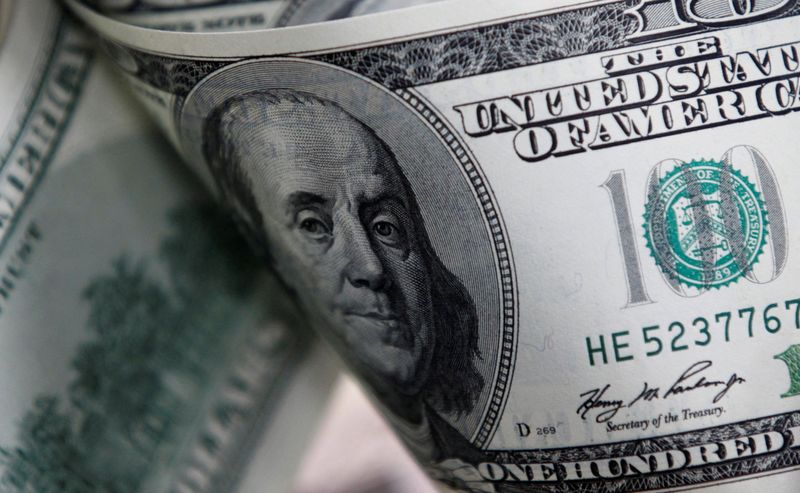Dollar to rebound, accumulate safe-haven strength in 2023: Reuters poll
2022.12.06 21:27
[ad_1]

© Reuters. FILE PHOTO: U.S. one hundred dollar notes are seen in this picture illustration taken in Seoul February 7, 2011. REUTERS/Lee Jae-Won
By Indradip Ghosh
BENGALURU (Reuters) – The dollar will rebound against most currencies over the coming months, with the growing threat of recession in the U.S. and elsewhere keeping it firm in 2023 through safe-haven flows, according to market strategists polled by Reuters.
While most said there was not much scope for further dollar upside based on monetary policy, the threat of deeper-than-expected economic weakness and renewed inflationary pressure mean investors may be reaching prematurely for riskier assets.
Down over 5% in November, the had its worst monthly performance since September 2010, in large part on expectations the U.S. Federal Reserve is about to slow the pace of its rate hikes and that an eventual pause is near.
Speculative traders swung to a net short position on the dollar for the first time in 16 months in November, according to calculations by Reuters based on U.S. Commodity Futures Trading Commission data.
But the Dec. 1-6 Reuters poll of 66 foreign exchange strategists suggested the greenback will trade around current levels a year from now and hold on to its near-10% gains so far this year, despite its recent setback.
Nearly two-thirds or 33 of 51 strategists who answered an additional question said the greater dollar risk over the coming month was that it would rebound rather than falling further.
“Now that assets have re-priced, investors may be poorly positioned to face a period which could be characterised by persistent core inflationary pressures coupled with impending recession in Europe and potentially in the U.S. next year,” said Jane Foley, head of FX strategy at Rabobank.
“We foresee volatility levels remaining high in the coming months and expect it is too early for USD bulls to fully capitulate.”
While relatively better U.S. economic performance and higher interest rates compared to its major peers helped the dollar to outperform nearly every currency, that trade based on rate differentials was mostly nearing its end.
Most major central banks, including the Fed, are expected to end their tightening campaigns in early 2023. An overwhelming 80% majority, or 42 of 51 respondents, said there was not much scope for dollar upside based on monetary policy.
Despite the dollar’s recent pullback, major currencies are not expected to recoup their 2022 losses against the USD until at least late 2023, the survey showed.
“For now, the forces that have supported the USD this year remain valid, despite the recent correction lower. Other currencies do not look as attractive yet,” said Athanasios Vamvakidis, head of G10 FX strategy at Bank of America (NYSE:).
“In our baseline, the USD remains strong early next year and starts a more sustained downward path after the Fed pauses. The risk we see is that inflation could be sticky on the way down, keeping the USD strong for longer.”
Reuters Poll-Major currency pair outlook
The euro, up 10% against the dollar since its record low in September but still down nearly 8% this year, was expected to lose around 3% by end-February to trade at $1.02. It was expected to climb higher to trade around $1.07 in a year.
The Japanese yen, down nearly 20% for the year and currently trading around 136.50 per dollar, was expected to change hands around 139.17, 136.17 and 132.67 per dollar over the next three, six and 12 months respectively.
Sterling, up over 17% from its record low of $1.0382 in September amid political turmoil, was forecast to lose nearly 5% to trade around 1.16/$ in three months.
The poll also showed most emerging market currencies would lose over the coming six months despite the Chinese authorities relaxing some of their zero-COVID rules that fuelled expectations of a rebound in economic activity.
The , which has gained around 5% since it reached its record low in November to trade below 7 per dollar, was expected to remain above that level over the coming six months.
[ad_2]
Source link








